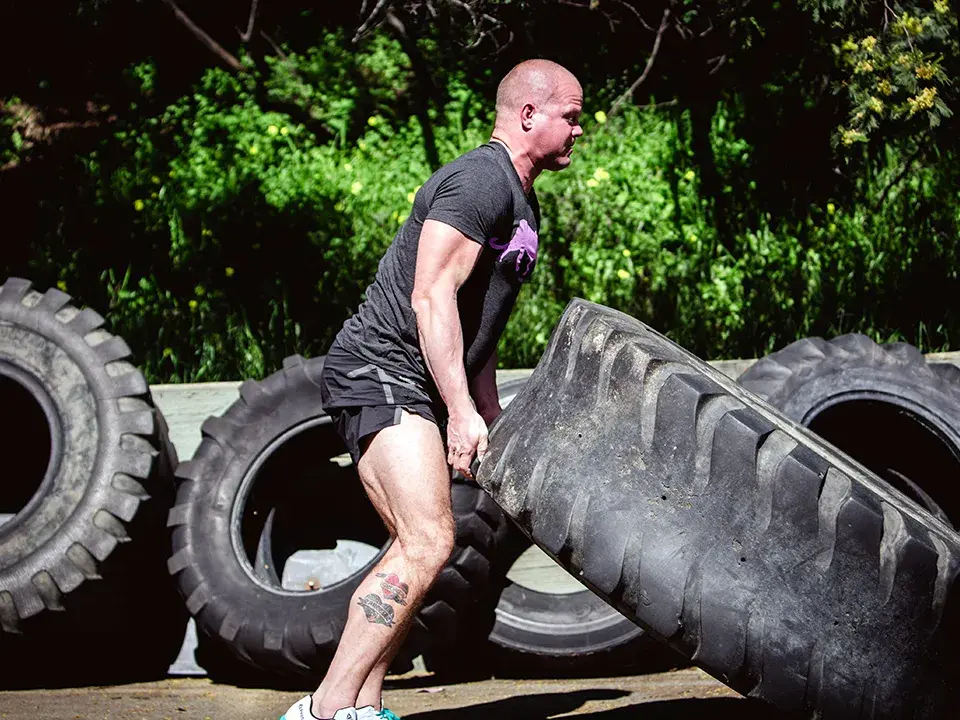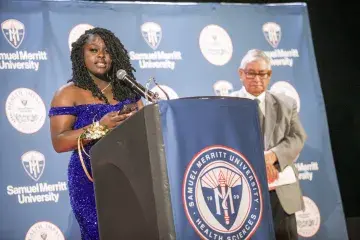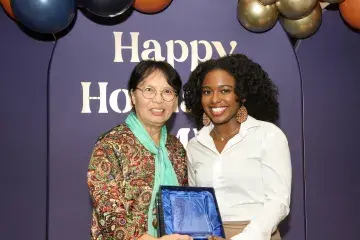Elite Trainer, CrossFit Star, and SMU Alum Kelly Starrett is Coming for Moms and Dads

A celebrity in the CrossFit world, Kelly Starrett, DPT ’07, opened the first CrossFit gym in San Francisco—and the 21st in the world—while still a student in SMU’s Doctor of Physical Therapy program. A visit by Starrett, affectionately called K-Starr by CrossFit devotees, is a badge of honor for any CrossFit gym.
Although he closed his gym in 2020 due to COVID-related challenges, Starrett still works with Olympians, professional sports teams, and elite athletes, and is sought out by the military to improve soldiers’ physical performance. Starrett’s aim these days is to take what he’s learned in working with top performers and reach the general public.
The New York Times bestselling author’s forthcoming book, Built to Move, focuses on a broad view of health that encompasses everything from sleep to the importance of walking to improving mobility. Starrett is also collaborating with Amazon to create a smartphone app that alerts users when certain simple exercises might improve aspects of their daily movement. And last year, Starrett re-branded his popular mobility website to The Ready State, a website and app that teaches people about mobility—what he describes as the ability to move freely through the human body’s full range of motions.
“Ultimately our mission is to have people living in homes with as many lights on as possible,” Starrett says, as an analogy. “Most of us are living in pretty dim homes. We don’t actually know what our body is capable of, and we don’t really access this incredible, durable physiology that humans are capable of.”
SMU News called him up to learn more.
What is The Ready State?
The movement language of the typical person is limited: They walk around a little, they stand, and then they sit. We empower people to be able to improve how they move, recover faster from training, and take a crack at changing their musculoskeletal discomfort. We have moms, dads, even high schoolers who have joined. They get access to a library of thousands of videos we’ve designed that focus on particular parts of the body, including a self-assessment tool to evaluate how well they’re moving.
So, I might have limited range of movement and not be aware?
Absolutely. The body is really good at working around a problem to keep you moving. If, for whatever reason, your body can’t move through all the movements human bodies can, you’re still going to be able to do most activities of daily living just fine. It’s not until you try to jump into something—swimming, taking a yoga class, trying a new sport, for example—that you’d realize there are things you can’t do.
How do I know if I need to improve my range of motion?
Here’s a simple test: Sit on the ground cross-legged. Can you get up without putting your hands or knees down? Research shows that for every point of contact you have to put down—a hand, a knee—your likelihood of mortality increases.
What can I do to improve my mobility?
Some interventions are simple. Walk around as much as you can today. Every chance you get, sit on the ground. Or just sit on the ground tonight when you watch TV. Sitting on the ground is an easy way for people to spend more time using the end ranges of their motion. When you feel like you need to move a bit and change position or the shape you’re sitting in, go for it. There’s a lot of variety of positions and range of motion to be had by sitting on the ground.
What does your book offer readers?
It’s really about the care and feeding of your body, solid practices that people can incorporate into their daily lives. The book is divided into 10 categories on topics such as nutrition, sleep, breathing, squatting, walking, with simple assessments and exercises for each. But instead of saying, ‘OK, sleep more,’ we show you how the walking you do during the day and the soft tissue work you do at night and the caffeine you stop drinking at noon help you fall asleep faster and sleep better. Then the next day you feel better and more excited about moving more. People don’t realize how tightly coupled these behaviors are.
You built a career coaching Olympians and elite athletes; how does your book apply to regular folks?
What’s good for the goose turns out to be really good for the gander. Things vary by degrees, they don’t vary by kind. For example, it turns out that having full range of motion with your hips is useful for my soccer player and Tour de France cyclist, but it’s also useful for someone who wants to get up and down off the ground or do better on their Peloton.
How has your degree from Samuel Merritt helped with your success?
SMU tries to create savage generalists—people who have a deep understanding of foundational elements in a field of study. We tend to not want to become competent in areas that aren’t in our direct interest, but that can lead to potential blind spots in understanding complex systems like the body. Generalism isn’t very sexy on the surface but those specialists that keep their footing and curiosity as whole system thinkers tend to be quite successful.
Most students have an idea of the kinds of physios they want to end up being, but you can pretty much drop any SMU grad into any clinical environment and they will succeed. That’s because to thrive at SMU you must be able to wear many hats. My focus has tended to fall on human performance and human function, yet my course materials on neuro dynamics, chronic pain, motor learning, and even communication were some of the most important information I was exposed to at SMU.


